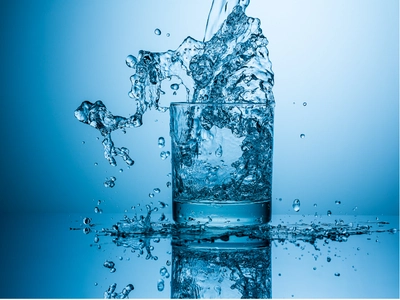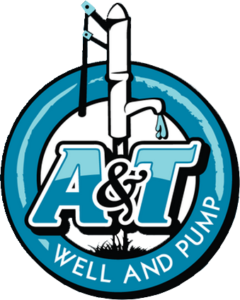Our team specializes in comprehensive well maintenance services. With our expertise and attention to detail,…
Water wells have been a cornerstone of human civilization for centuries, providing essential access to clean water for drinking, agriculture, and various other purposes. Yet, hidden beneath the surface lies a complex well system comprising several crucial components. Join the team of well repair experts at A&T Well and Pump in Raleigh, NC as we uncover the 10 key parts of a well, shedding light on their roles and significance in ensuring a reliable water supply.
#1 - Well Casing
Casing is a tubular structure installed into the drilled borehole to prevent it from collapsing. When it comes to important parts of a well, the well casing serves as the outer shell of the well, protecting it from external contaminants such as soil, rocks, and other debris. Additionally, the well casing provides structural support for the well and helps maintain the integrity of the borehole.
Casing is typically made of steel or PVC and is installed during the drilling process, with proper selection and installation being crucial to prevent groundwater contamination and structural collapses.
#2 - Well Screen
The well screen is a perforated pipe or tube that is installed inside the well casing, allowing water to enter the well while preventing the entry of sediment, sand, and other debris. The parts of a well making up the well screen acts as a filter, ensuring that only clean water flows into the well.
Various types of well screens are available, including slotted screens, wire-wrapped screens, and continuous-slot screens. Your water quality, pump capacity, and well depth influence the type of well screen your well needs.
#3 - Gravel Pack
The gravel pack is a layer of coarse gravel or sand that is placed between the well casing and the well screen. In exploring the various parts of a well, it's vital to explore the primary function of the gravel pack, as it prevents the entry of fine particles into the well, which can clog the screen and reduce the efficiency of the well. The gravel pack also provides stability to other parts of a well, such as the well screen, and helps to maintain proper hydraulic conditions around the well.
Proper gravel packing techniques, including the use of appropriately sized materials and proper placement, are essential to ensuring optimal performance and longevity of the well for your Raleigh home.
#4 - Well Pump
The well pump is one of the primary parts of a well, as it is responsible for extracting water from the underground reservoir and delivering it to the surface. It creates suction or pressure to lift the water from the well and transport it through the system.
Various types of pumps are used in water wells, including submersible pumps, jet pumps, and centrifugal pumps, with selection depending on factors such as well depth, water level, and flow rate requirements. Proper sizing, well pump installation, and maintenance of the well pump are essential for efficient water delivery and system performance for all parts of a well.
#5 - Drop Pipe
The drop pipe is a vertical pipe that connects other parts of a well. It connects the well pump to the wellhead and transports water from the pump to the surface. The drop pipe is typically made of durable materials such as PVC or steel and is installed inside the casing.
The drop pipe must be properly sized and installed to ensure efficient water flow and to withstand the pressures and forces exerted during pumping operations. Additionally, proper sealing and connections are necessary to prevent leaks and ensure the integrity of the parts of a well system.
#6 - Pump Motor

When it comes to parts of a well that keep it operating efficiently, the pump motor is responsible for powering the pump, converting electrical energy into mechanical energy to drive the pumping mechanism. It is typically located either above ground or submerged in the well, depending on the type of pump used.
These parts of a well are available in various sizes and configurations, with selection based on factors such as pump horsepower, voltage requirements, and operating conditions. Regular maintenance, including lubrication, inspection, and well pump repair, is essential to prolong motor life and ensure consistent performance.
#7 - Pressure Tank
Pressure tanks play a vital role in water well systems by maintaining water pressure and reducing well pump cycling. These parts of a well store water under pressure, allowing for a steady flow of water to the household or distribution system without the need for constant pump operation.
Pressure tanks are available in various sizes and configurations, including diaphragm tanks and bladder tanks, with selection based on factors such as system flow rate, pressure requirements, and space limitations. Proper sizing, installation, and maintenance of these parts of a well are essential for optimal system performance and longevity.
#8 - Control Box
The control box is an electrical device that regulates the operation of the well pump, monitoring water levels and controlling start-up and shut-off. It typically contains components such as relays, capacitors, and pressure switches, which work together to control pump operation based on system demand.
These parts of a well are available in various configurations, including manual and automatic model control boxes, with features such as overload protection, voltage sensing, and diagnostic capabilities. Understanding the control box's components, and its operation is essential for ensuring proper water well pump function and system reliability.
#9 - Well Cap
Well caps are protective covers installed at the top of the well casing to prevent contaminants, debris, and pests from entering the well. This part of a well provides a barrier between the surface and the wellhead, helping to maintain water quality and system integrity.
Well caps are an example of parts of a well made from extremely durable materials such as metal or plastic and are available in various designs, including vented and non-vented models. Compliance with regulations regarding the installation of these parts of a well and their maintenance is essential for ensuring the safety and integrity of the entire well system.
#10 - Wellhead
The wellhead is the topmost part of a well, housing various other parts of a well, such as the casing head, tubing head, and pressure control equipment. It provides access to the well for maintenance, repair, and monitoring activities and serves as a connection point for the pump and other system components.
Proper maintenance and protection of the wellhead are essential to prevent damage and ensure the long-term functionality of the well. Components such as wellhead seals, casing spools, and pressure control valves must be inspected regularly and replaced as needed to maintain system integrity and safety.
Maintenance and Care Tips for Parts of a Well
Ensuring the proper functioning and longevity of a water well system requires regular maintenance and care of all the parts of a well system. By incorporating routine inspections of water well parts, performing essential maintenance tasks, and promptly addressing any signs of potential problems, Raleigh homeowners can safeguard their water supply and prevent costly repairs.

Schedule Regular Well Inspections
Schedule annual inspections by a qualified well contractor to assess the overall condition of your well system, including all of the parts of the well. Be sure to routinely conduct visual inspections of the wellhead, casing, and surrounding area for signs of damage, corrosion, or contamination.
Monitor water quality regularly by testing for bacteria, nitrates, and other contaminants, especially if you notice any changes in the taste, odor, or appearance of the water. Keep a record of inspection dates, water quality test results, and any maintenance or repairs performed for future reference.
Routine Maintenance Tasks for Water Well Parts
Inspect and clean the well cap and vent regularly to prevent debris, insects, and small animals from entering the well. Check the pressure tank periodically for proper pressure settings and signs of leaks or corrosion. Adjust the air pressure if necessary, test the pressure switch and control box to ensure proper operation, and adjust settings as needed.
Additionally, inspect the drop pipe and connections for leaks, corrosion, or damage, and repair or replace any worn or damaged components. Be sure to lubricate pump motor bearings and moving parts according to manufacturer recommendations to reduce friction and prevent premature wear.
Signs of Potential Problems with Parts of a Well
Be vigilant for signs of potential problems, such as:
- Low water pressure
- Air sputtering from faucets
- Unusual noises from the pump
- Water quality changes, including cloudiness, discoloration, or foul odors
- Increases in electricity bills, which could signal pump inefficiency or malfunction
Contact a Raleigh Well Inspection with A&T Well and Pump Today
Ready to ensure the safety and efficiency of your water well system? Contact A&T Well and Pump for professional well inspection services in Raleigh today.
Our experienced team of water well contractors specializes in comprehensive video well inspections, maintenance, and well repairs to keep your water supply clean, reliable, and worry-free. Whether you're due for an annual inspection or suspect a problem with your well or parts of a well, we're here to provide prompt and reliable service tailored to your needs.
Contact us today by calling (919) 980-0981 or filling out the online contact form below to get started.
"*" indicates required fields

